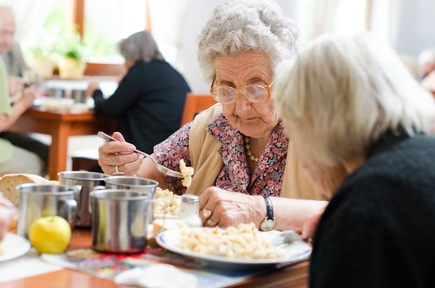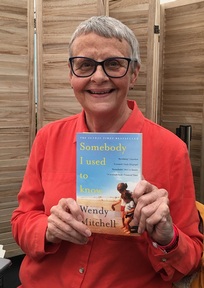EU allergen legislation to create large fines for non-compliant care homes
 As of December 2014, all care homes are obliged to provide information about allergens in all food prepared and served to care home residents, facing fines if they do not comply.
As of December 2014, all care homes are obliged to provide information about allergens in all food prepared and served to care home residents, facing fines if they do not comply.
The change in EU legislation makes it unacceptable for care homes to state on menus that they do not know, or that allergens ‘could’ be present and any information on allergens must be made available to residents and their family.
The EU has named 14 ‘top’ allergens that must be highlighted if present in meals as part of the new restrictions. The list includes meals containing milk, fish, soya and sesame.
Nutritionist and founder of Menu Analyser, a system that lets care home chefs store all nutritional values and allergens in their meals, has urged all homes to display allergen information to avoid fines from the environment agency.
Teresa Dupay said: “What I say to care home managers who have not yet done anything about showing the allergen information in their food is put up a sign where residents eat. So when the care home inspector comes in either via the CQC or Environmental Health Officer they can see the commitment the care home has made.
“Some residents might be allergic to things such as fish but it is hidden allergens in things like pre made soups where chefs fall down because they don’t know what is in these foods. For example gravy granules contains celery, soybean and gluten (wheat) in it so care homes must be careful when serving this in case residents have an intolerance and allergy to these foods.
“We carried out trials with a care group of 17 homes and they reported a significant change in the moods and behaviours of residents because they were eating nutritionally balanced meals.”
There are currently two million people living in the UK with food allergies, a number which is continuing to rise, affecting 30 to 35 per cent of people at some point during their lives. An estimated 50 per cent of children are diagnosed with an allergic condition that can include food allergies and so is something care homes will be required to provide information on increasingly in the future.
Chun-Han Chan, food allergies expert at the Food Standards Agency, said: “These new measures will make it simpler for those with allergies to buy and consume food. Allergies can be fatal for some people and this is why it is vital that food businesses give their customers information they can trust.”
Menu Analyser provides chefs with a system that allows them to understand all information about their meals including calories, allergens and the nutritional value of each food.
Top 14 allergen foods
Eggs,  Molluscs,
Molluscs,
Crustaceans,
Celery,
Milk,
Fish,
Treenuts,
Sulphites,
Soya,
Sesame,
Peanuts,
Mustard,
Lupin
Gluten.
Menu Analyser
Menu Analyser was created three years ago by Teresa Dupay who is a qualified nutritionist and has previously worked with people losing weight, parents and children and within the school environment.
Ms Dupay improves allergen information available in food settings such as restaurants and care homes. Menu Analyser can be installed and run in care homes, with hands on training provided for chefs to improve their confidence in the kitchen.
Ms Dupay visits care homes across the UK and regularly finds that recipes being served by chefs are not written down but followed from memory, leaving chefs unable to ensure all meals are nutritionally balanced.
She said: "The chefs we worked with explained how they had no idea how much fat they were giving their customers and although they are artists in their own right they didn’t know the nutritional values of what they were serving.
"Recently I have been concentrating on the care home sector, which is very dear to my heart. I believe what we provide can help them feed their residents correctly because that is exactly what our service does.
"If I work with a care home group we get all the chefs from the homes together and get them to lay out three or four recipes and they have to say whether the recipe has carbohydrates, fat, how much fibre, etc., is in the meal and what is amazing is that they often have no idea about this information.
"We then put the recipe into the system it is lovely to see their faces when they see the results." 
The nutritionist believes care home chefs should be given more attention and training to improve the work they do and that recognition should come from managers and owners.
"Catering staff are working in an increasingly pressurised environment so what I tell them all when I meet them is that they are the heart of the home, and it is true! When you have friends or relatives around people gather in the kitchen and spend time there and it is the same in spirit for a care home," she explained.
Focusing on Food
Ms Dupay believes the catering team within care homes are often under appreciated and while championing the work care support staff provide, she wants nutrition to become a bigger focus of care homes to reflect the importance of a healthy balanced diet for residents.
She said: “Making people feel valued helps them to think more positively about food and has a psychologically positive impact. It is interesting as, depending on a chef’s own likes and dislikes about a food, it will impact on whether they use it in dishes.
"For example if a chef does not like beetroot they are unlikely to cook with it even though it has high nutritional value. It is fascinating how the psychology of the chef can impact their work.
She is also keen to see younger chefs entering the care home environment and thinks giving recognition to catering staff will increase the way the profession is viewed to younger people.
“I know one chef who started as a paper boy delivering to the care home then moved into the kitchen and worked his way up to become head chef.
"He started when he was a teenager and now he is in his 30s and talks to the residents everyday and loves where he works. I hope all chefs in care homes get the appreciation this head chef gets when he works with residents.”
Technology timeline
The EU legislation requiring food providers to show the allergen information of food they serve has been attacked by some top chefs who told the Daily Telegraph the rules hurt 'spontaneity, creativity and innovation,' but Ms Dupay believes the care home sector catering teams should use the legislation to improve standards and help boost the importance managers place on catering within homes.
She has urged care homes to embrace the opportunities technology can offer in the caring environment to increase the knowledge chefs have about the food they are serving to the most vulnerable people in the community.
She concluded: "I think the industry still has a long way to go and we are currently putting services in place which will start filtering through the sector and now care homes are receiving very little funding from the NHS they must make their budgets stretch even further I think the sector must see care homes as a business.
"The sector should be tapping into the technology proven industry which will save time and money for each and every care home across the UK and apps and technology out there which are available to help with care homes. I want care homes to have an app which can make all their menus available to them through the app."
Latest Features News
 25-Nov-19
2019 Election: Boris Johnson leaves social care in 'too difficult box' but Labour vows to end 'crisis'
25-Nov-19
2019 Election: Boris Johnson leaves social care in 'too difficult box' but Labour vows to end 'crisis'
 18-Oct-19
Podcast: Wendy Mitchell and dementia: 'My biggest fear is not knowing who my daughters are'
18-Oct-19
Podcast: Wendy Mitchell and dementia: 'My biggest fear is not knowing who my daughters are'
 27-Sep-19
Exclusive: Care minister backs care workers' call for time off to grieve and attend funerals
27-Sep-19
Exclusive: Care minister backs care workers' call for time off to grieve and attend funerals
 19-Sep-19
Podcast: Gyles Brandreth says poetry helps ward off dementia
19-Sep-19
Podcast: Gyles Brandreth says poetry helps ward off dementia
 30-Aug-19
Edinburgh Fringe funnyman joins comics facing toughest audience at care home gig
30-Aug-19
Edinburgh Fringe funnyman joins comics facing toughest audience at care home gig